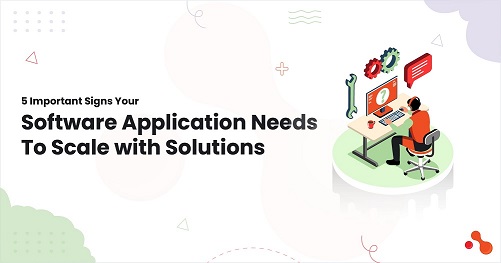


As the system grows, so do its complexities. With overloads and changing perspectives
As the system grows, so do its complexities. With overloads and changing perspectives, there occur many signs your application needs to scale, sometimes immediately. You just need to maintain the system’s efficiency by handling the much-needed scalability aspect.
However, knowing the right time to start with system scalability is tedious, especially for newcomers. You must take up this challenge to scale regularly to ensure your system’s efficiency, performance, and workload management.
Don’t worry, we will give you the top 5 telltale signs your application needs to scale; Keep reading the blog further—
At Acquaint Softtech, we provide 360° system scalability solutions for businesses looking forward to excelling in providing fast and responsive digital solutions worldwide!
Let us know!
One of the major signs your application needs to scale is that the system struggles to perform when data overload comes. If you’re frequently facing performance issues under system database loads, resulting in efficient performance, then you must hurry and contact a software engineering professional for help!
In case the system becomes unable to handle the database load, it becomes unable to perform under peak loads. Due to excessive database locking and contention, the server struggles to keep up with read/write operations. These kinds of database bottlenecks interrupt the entire system and finally slow it down.
Managing data to its peak extent is the utmost necessity of any business aspiring to be a key player. Data management is the milestone for achieving ultimate business success in the digital world. If you’re struggling to implement proper database management tactics, you must take some professional help from active software engineering services you know about!
As software gets older, it might struggle to process, manage, organize, and store data as and when needed. Relying on manual tasks is a major issue that businesses often overlook and fail to improve over time. With an increased user base, you must implement an automation-based tech stack to survive in the competitive market. Manual data processing will not only bog down your system time, but also your brand will slowly crawl in the high-speed race to achieve more users!
Not to forget, it will also bring certain data limitations and frequent downtimes, and you will not get more valuable data insights. Ultimately, you won’t end up developing a solid plan for your software product development.
You must eliminate all time-consuming tasks, such as manual work, as they may lead to human error. System downtime impacts the overall brand’s trust and other business-related operations as well. If the user data growth is impacting the system performance and outpacing its core capabilities, then you must adopt these scalability solutions for legacy systems—
Is your system fast enough to respond within milliseconds?
Does your system page take a long(er) time to load?
Does your page undergo more HTTP 500, 502, or 503 errors?
Significant system delays in data processing, request processing, and content delivery cause data latency. The system with an active and fast API response time will get more chances to drive in more customers. More data latency and timeout errors quickly frustrate the users, leading to churn.
